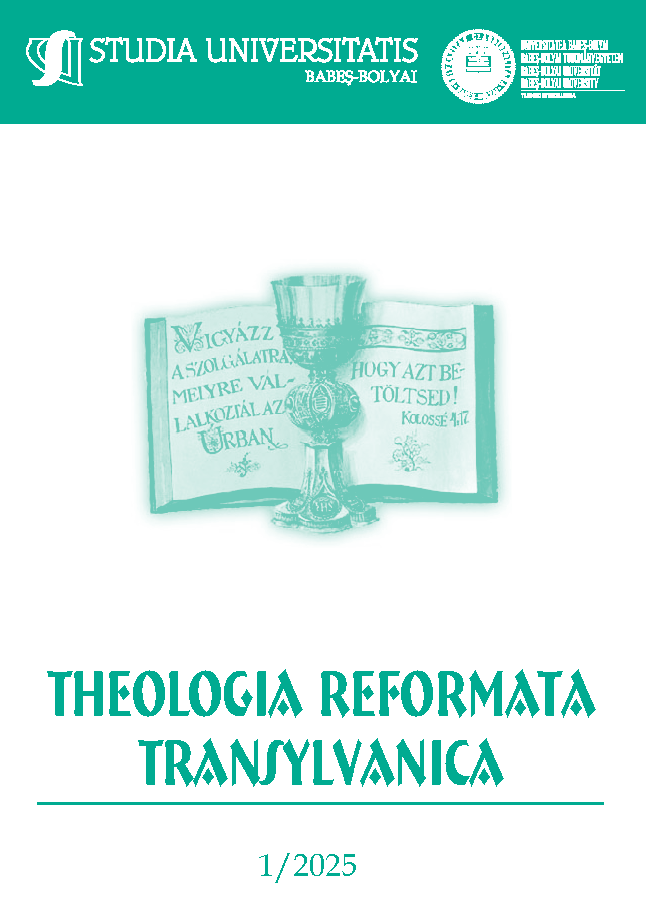Az érzelemszabályozás interperszonális aspektusai felnőtteknél – egy feltörekvő kutatási irány három modelljének bemutatása
DOI:
https://doi.org/10.24193/subbtref.70.1.16Keywords:
emotion regulation, interpersonal emotion regulationAbstract
Interpersonal Aspects of Emotion Regulation in Adults – A Presentation of Three Models of an Emerging Research Direction. Emotion regulation is closely intertwined with the fact that we are social beings, experiencing, expressing, and regulating emotions with and through others. Although prevailing approaches to emotion regulation emphasize the importance, even centrality, of interpersonal processes, in the absence of models and measurement tools, the wave of emotion regulation research in the 1990s and 2000s has focused predominantly on intrapersonal processes. Recent efforts to delineate the framework of interpersonal emotion regulation have set the stage for studies in this area. In the present paper, three such frameworks are presented with their associated measurement tools.
References
ALDAO, Amelia – GEE, Dilan G. – DE LOS REYES, Andres – SEAGER, Iliana (2016): Emotion Regulation as a Transdiagnostic Factor in the Development of Internalizing and Externalizing Psychopathology: Current and Future Directions, In: Development and Psychopathology. 28. 927–946.
BAUMEISTER, Roy F. – GAILLIOT, Matthew – DEWALL, Nathan C. – OATEN, Megan (2006): Self‐regulation and Personality: How Interventions Increase Regulatory Success, and How Depletion Moderates the Effects of Traits on Behavior, In: Journal of Personality. 74. 6. 1773–1802.
BOLGER, Niall – AMAREL, David (2007): Effects of Social Support Visibility on Adjustment to Stress: Experimental Evidence, In: Journal of Personality and Social Psychology. 92. 3. 458–475.
CAMPO, Michael – SANCHEZ, Xavier – FERRAND, Claude – ROSNET, Elisabeth – FRIESEN, Andrew – LANE, Andrew M. (2017): Interpersonal Emotion Regulation in Team Sport: Mechanisms and Reasons to Regulate Teammates’ Emotions Examined, In: International Journal of Sport and Exercise Psychology. 15. 4. 379–394.
CARVER, Charles S. – SCHEIER, Michael F. – WEINTRAUB, Jagdis K. (1989): Assessing Coping Strategies: A Theoretically Based Approach, In: Journal of Personality and Social Psychology. 56. 2. 267–283.
COAN, James A. – SCHAEFER, Hillary S. – DAVIDSON, Richard J. (2006): Lending a Hand: Social Regulation of the Neural Response to Threat, In: Psychological Science. 17. 12. 1032–1039.
DIXON-GORDON, Katherine. L. – BERNECKER, Samantha L. – CHRISTENSEN, Kara. (2015): Recent Innovations in the Field of Interpersonal Emotion Regulation, In: Current Opinion in Psychology. 3. 36–42.
GARNEFSKI, Nadia – KRAAIJ, Vivian – SPINHOVEN, Philip (2001): Negative Life Events, Cognitive Emotion Regulation and depression, In: Personality and Individual Differences. 30. 1311–1327.
GOETZ, Jennifer L. – KELTNER, Dacher – SIMON-THOMAS, Emilia (2010): Compassion: An Evolutionary Analysis and Empirical Review, In: Psychological Bulletin. 136. 3. 351–374.
GRANDEY, Alicia A. (2003): When “The Show Must Go On”: Surface Acting and Deep Acting as Determinants of Emotional Exhaustion and Peer-Rated Service Delivery, In: Academy of Management Journal. 46. 1. 86–96.
GROSS, James J. (1998a): Antecedent- and Response-Focused Emotion Regulation: Divergent Consequences for Experience, Expression, and Physiology, In: Journal of Personality and Social Psychology. 74. 1. 224–237.
(1998b): The Emerging Field of Emotion Regulation: An Integrative Review, In: Review of General Psychology. 2. 271–299.
(2002): Emotion Regulation: Affective, Cognitive, and Social Consequences, In: Psychophysiology. 39. 281–291.
GROSS, James J. – THOMPSON, Ross A. (2007): Emotional Regulation, In: Gross, James J. (szerk.): Handbook of Emotion Regulation. Guilford Press. 3–24.
HARM, Jonathan – VIEILLARD, Sandrine – DIDIERJEAN, Andre (2014): Using Humour as an Extrinsic Source of Emotion Regulation in Young and Older Adults, In: Quarterly Journal of Experimental Psychology. 67. 1895–1909.
HOFMANN, Stefan G. (2014): Interpersonal Emotion Regulation Model of Mood and Anxiety Disorders, In: Cognitive Therapy and Research. 38. 483–492.
HOFMANN, Stefan G. – CARPENTER, Joseph K. – CURTISS, Joshua (2016): Interpersonal Emotion Regulation Questionnaire (IERQ): Scale Development and Psychometric Characteristics, In: Cognitive Therapy and Research. 40. 341–356.
Lazarus, Richard – Folkman, Susan (1984): Stress, Appraisal, and Coping. Springer.
LITTLE, Lauro M. – GOOTY, Janaki – WILLIAMS, Michele (2016), The Role of Leader Emotion Management in Leader–Member Exchange and Follower Outcomes, In: Leadership Quarterly. 27. 1. 85–97.
MARIGOLD, Denise C. – CAVALLO, Justin V. – HOLMES, John G. – WOOD, Joanne V. (2014): You Can’t Always Give What You Want: The Challenge of Providing Social Support to Low Self-esteem Individuals, In: Journal of Personality and Social Psychology. 107. 5680.
MOGYORÓSY-RÉVÉSZ, Zsuzsa (2021): Érzelemszabályozás a gyakorlatban. Budapest, Kulcslyuk Kiadó.
NIVEN, Karen – TOTTERDELL, Peter – HOLMAN, David (2009): A Classification of Controlled Interpersonal Affect Regulation Strategies, In: Emotion. 9. 4. 498–509.
NIVEN, Karen – TOTTERDELL, Peter – STRIDE, Christopher B. – HOLMAN, David (2009): Emotion Regulation of Others and Self (EROS): The Development and Validation of a New Individual Difference Measure, In: Current Psychology. 30. 1. 53–73.
PARKINSON, Brien – TOTTERDELL, Peter (1999): Classifying Affect Regulation Strategies, In: Cognition and Emotion. 13. 277–303.
PARROTT, Gerrod W. (1993): Beyond Hedonism: Motives for Inhibiting Good Moods and for Maintaining Bad Moods, In: Wegner, D. M. – Pennebaker, J. W. (szerk.): Handbook of Mental Control. Englewood Cliffs: Prentice-Hall. 278–305.
RIEDIGER, Michaela – SCHMIEDEK, Florian – WAGNER, Gert G. – LINDENBERGEr, Ulman (2009): Seeking Pleasure and Seeking Pain: Age-Related Differences in Pro- and Contra-hedonic Motivation from Adolescence to Old Age, In: Psychological Science. 20. 1529–1535.
RIMÉ, Bernard (2009): Emotion Elicits the Social Sharing of Emotion: Theory and Empirical Review, In: Emotion Review. 1. 1. 60–85.
SIMONS, Gwenda – BRUDER, Martin – VAN DER LOWE, Iimo – PARKINSON, Brian (2012): Why Try (Not) to Cry: Intra- and Inter-personal Motives for Crying Regulation, In: Frontier Psychology. 3. 597.
SUKHODOLSKY, Denis G. – GOLUB, Arthur – CROMWELL, Erin N. (2001): Development and Validation of the Anger Rumination Scale, In: Personality and Individual Differences. 31. 689–700.
WILLIAMS, Craig W. – MORELLI, Sylvia A. – DESMOND, C. Ong – ZAKI, Jamil (2018): Interpersonal Emotion Regulation: Implications for Affiliation, Perceived Support, Relationships, and Well-being, In: Journal of Personality and Social Psychology. 115. 2. 224–254.
ZAKI, Jamil – CRAIG, Williams (2013): Interpersonal Emotion Regulation, In: Emotion. 13. 803–810.
Downloads
Published
How to Cite
Issue
Section
License
Copyright (c) 2025 Studia Universitatis Babeș-Bolyai Theologia Reformata Transylvanica

This work is licensed under a Creative Commons Attribution-NonCommercial-NoDerivatives 4.0 International License.



